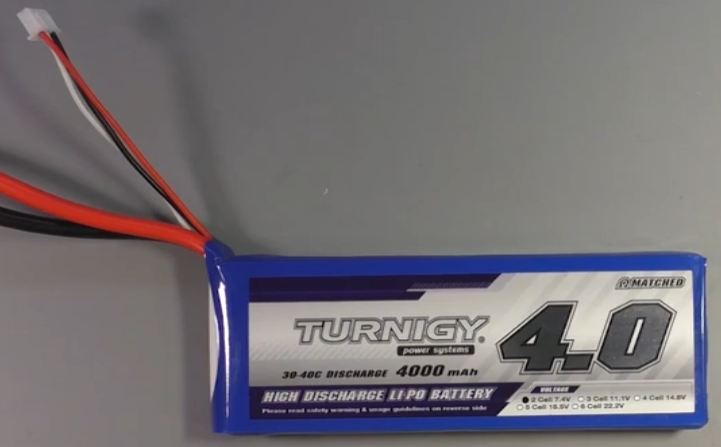Building Your Own Drone - Batteries - Part 1
When selecting a battery for electronic devices, it’s essential to understand how to interpret the information provided on various battery types. Let’s explore this with an example of buying a battery for a drone.
In Figure 1, the battery specifications are:
- 4000mAh
- 30-40c discharge
- 2 cells, 7.4V
- LiPo (Lithium-Polymer Ion)

Figure 1: Example of a battery.
Understanding the Specifications
- Capacity (4000mAh)
- The capacity, measured in milliamp-hours (mAh), indicates how much charge the battery can hold. A higher capacity means more energy storage, but it also makes the battery heavier.
- A 4000mAh battery can supply 4000mA of current for one hour, or 2000mA for two hours, and so on.
- Essentially, a higher mAh rating means the device can run longer or power a more demanding device.
- Discharge Rate (30-40C)
- The C rating shows how quickly the battery can be discharged without being damaged. It represents a multiplier of the battery’s capacity.
- Here’s how to calculate the C rating:
- \(C =\) Capacity (in Ah) \(\cdot\) Discharge Rate
- For a 4000mAh battery: \(\\ \begin{align} c &= \frac{4000 \, mAh}{1000} = 4A \tag{1.1} \end{align} \\\)
- Continuous discharge capability according to the rating of the battery: \(\\ \begin{align} 30 \cdot c = 30 \cdot 4 = 120A \tag{1.2} \\ 40 \cdot c = 40 \cdot 4 = 160A \tag{1.3} \end{align} \\\)
- This means the battery can provide 120A - 160A continuously until it’s fully discharged. However, drawing such high current continuously may cause damage (e.g. melted leads), so it’s crucial to understand the real power needs of your device.
- Cell Configuration (2 cells, 7.4V)
- This battery contains two 3.7V cells connected in series, providing a total voltage of 7.4V. The number of cells affects the total voltage output of the battery.
- Battery Type (LiPo)
- Lithium-Polymer Ion (LiPo) batteries are lightweight and offer high energy density, making them ideal for applications like drones.
- However, LiPo batteries require more care, as improper charging can lead to imbalanced cells and potential damage. For example, if one cell charges to 3.7V and the other to 4.3V, the battery can become unstable.
- It’s essential to use a high-quality balanced charger, such as the Powertech Plus, to ensure each cell is charged equally.
Choosing the Right Batter for a Drone
- High Discharge Rates: If you’re doing high-performance flying or racing, choose a battery with a high C rating. High discharge rates provide more power quickly but may result in heavier, bulkier batteries, which can affect your drone’s flight time and maneuverability.
- Connectors: The battery connectors in this example are JST XH and bullet plugs. These connectors are common in LiPo batteries, and it’s essential to use the right charger and connectors to maintain battery health.
Common Battery Types for Quadcopters
- Nickel-Cadmium (NiCd): Older technology, lower capacity but can handle more charge cycles.
- Nickel-Metal Hydride (NiMH): Higher capacity than NiCd, but heavier and less power dense.
- Lithium-Ion (Li-ion): High energy density and lighter weight, but requires careful charging.
- Lithium-Polymer (LiPo): Most common for drones due to its high power density and lightweight structure, but requires balanced charging.
By understanding these key battery parameters, you can choose the best battery for your electronic device, ensuring optimal performance and safety.
Written on January 28, 2024